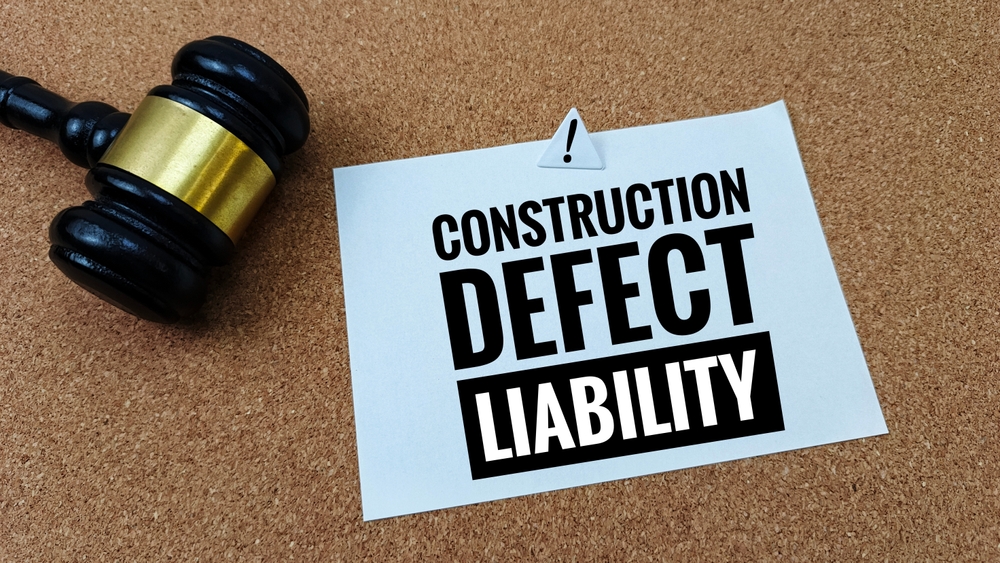

Chapter 1
“I did not agree to do the electrical work. I never agree to do the electrical work.”
That’s what Josh from Super Door Subcontractor told me after the general contractor on his community college project had sent him a notice of default letter. The letter demanded that he return to the project site and install the electrical components for the glass doors he had just finished installing. The letter further stated if the requested work was not completed in the next forty-eight hours, Josh’s subcontract would be terminated.
“I’m a door contractor, not an electrical contractor. I didn’t agree to do the electrical components,” Josh said.
“Have you looked at the scope that was referenced in the subcontract you signed?” I asked.
“No, but I didn’t put the electrical components as part of my bid. If I have to install the electrical components, I will lose my ass. I didn’t budget for that,” Josh explained.
Sure enough, after we reviewed the paperwork, Josh’s bid did not include the electrical components, but the scope of work Josh agreed to when he signed the subcontract did.
The best advice I could give Josh was to hire someone to install the electrical components. If he did not, the general contractor would terminate Josh’s contract. Once the subcontract was terminated, the general contractor had no obligation to pay Josh for the work he had already done. As unfair as that sounds, that’s what Josh signed up for: he wouldn’t get a dime until all the work in his scope was completed.
If Josh didn’t complete his scope of work, the general contractor would hire someone to install the electrical components and backcharge Josh for that expense. More often than not, the replacement subcontractor is never as reasonable as what you could find. And if that wasn’t bad enough, if the general contractor had to finish Josh’s scope, there would be an additional 15% added to the actual cost of the electrical components to cover the general contractor’s administrative fee.
Josh ended up taking my advice and hired someone to install the electrical components, costing him $3,000. Although Josh did not make money on that project, the cost could have been exponential if he had not finished.
A bid is an offer you send to the general contractor saying that you will do the work described for a certain price. A scope is what is attached to the subcontract and describes the work you are hired to do. (We’ll dive deeper into a scope in chapter 4.) Your bid and the scope attached to the
subcontract are rarely the same. More importantly, your bid will not become part of the subcontract. Every time you receive a subcontract to sign, you need to review the scope as if you were reviewing a new project to bid.
When you prepare your bid, make sure you review all the documents in the bid package, including the required plans and specifications. If you have questions, ask the general contractor. Then gather the information you need to get an accurate estimate of how much it will cost you to complete your scope of work. When you submit your bid, ensure that it includes an itemized list of everything you agree to work on. Include specifics, such as square footage and the grade of materials you are proposing to use. It is important to be clear what the price for your scope of work includes.
There are two main types of bid proposal methods. The first is the itemized method, which lists exactly what you agree to do for the reflected price. The second method is when you generally reference the scope of work for a stated price.
I highly recommend that you always itemize your bids.
A bid is a legal offer that can be accepted once it is provided to the general contractor. If the bid you sent is not itemized and is missing something, it could mean financial ruin. For example, let’s say you are an HVAC subcontractor, and you receive a request to bid a rehab facility. You submit a bid that isn’t itemized, simply stating that you will do the HVAC work on the rehab facility for $300,000. The general contractor reviews the bids for the HVAC work, and your bid stands out because it is about $100,000 lower than the other subcontractors’ bids. It is clear you missed something in the bid. The general contractor immediately sends you a subcontract before you realize your mistake. You can withdraw your offer before it is accepted, but once the general contractor sends you that email stating that your offer is accepted, you cannot back out. You are now on the hook for an additional $100,00 worth of work you did not budget for. What would that do to your company?
If you had sent an itemized bid, it would have been clear what you were agreeing to do for your $300,000 offer and that you were not offering to do the whole scope for the $300,000. Now, if the general contractor sends you an email accepting your offer, you are only on the hook to do what was in the bid- thanks to your itemized list.
What if the general contractor sends you a subcontract that includes the whole scope for your $300,000 price? If you are in the habit of reviewing the scope attached to every subcontract as if it were a new bid (which I encourage you to do!), you will catch that the scope is larger than what your bid included. If this should ever happen to you, do not sign the subcontract and immediately contact the general contractor. Let them know that the extra work was not included in your bid, and if they need you to do this additional work, it will cost $100,00 more. Boom! Crisis averted.
Missing something in the scope does not only happen because you miss something when you are putting your bid together. Project requirements often change between the time you bid on the project and receive the subcontract. There could be a new version of the plans that alter the project, or an RFI (request for information) could change your scope of work.
It is thus of the utmost importance for you to always read the scope as if you were reviewing a new project to bid.
And while I’m at it, make sure your bid is professionally written, meaning there aren’t any errors or typos. The bid should speak for itself; everything should be detailed and clearly explained. You are more likely to be hired if your bid is complete and easy to understand.
If you learn anything from this book, learn these two things: first, make sure your bid is accurate and done in the itemized method. Your bid is a legal offer and can be accepted as is once it is sent. Second, every time you receive a subcontract for a new project, and compare that price with your original bid for the project.
If the price you get for the scope attached to the subcontract is higher than your bid, find out what the difference is. Once you have found the discrepancy, send the general contractor an email that says something to the effect of: “My original bid did not include [list everything it didn’t include here]. If you would like m e to do [list them again], the subcontract price will need to be raised to $[enter your new dollar amount]. Please send over a revised subcontract for that amount. Thank you.”
Had Josh taken the time to review the scope attached to his subcontract, he would have seen that it was different from the bid he submitted and would have saved himself some money. Do not be like Josh. Take the time to review the scope before you sign a subcontract.
You have not even signed a subcontract yet and are already facing grave danger. The real fun begins when we dive into what documents make up the subcontract, which we’ll address in the next chapter.
Key Points:
Karalynn Cromeens is the Owner and Managing Partner of The Cromeens Law Firm, PLLC, with over 17 years of experience in construction, real estate, and business law. A published author and passionate advocate for contractors, she has dedicated her career to protecting the businesses her clients have built. Karalynn is on a mission to educate subcontractors on their legal rights, which inspired her books Quit Getting Screwed and Quit Getting Stiffed, as well as her podcast and The Subcontractor Institute.

